18-speed gaussgan
In the days of my turbulent youth, when Fallout was not yet forgotten by the masses, and every second student played in Stalker, it was fashionable among technically educated youth to collect (or at least try to collect) the Gaussgans, railguns and other "wunderwaffles" seen in computer games . Some sites supported world ratings of amateur designs, and of course I wanted to be the first in them. To this end, I decided to assemble an 18-speed Gaussgan.

About this Gaussgan I was prompted to write this article . It briefly describes the design of a single-stage gaussgan, so I won’t repeat it. The meaning of a multi-stage gaussgan is for the projectile to immediately accelerate after the first coil leaves the next coil, and thus each step would add a little bit of speed to it.
Since my knowledge and skills in the field of design at that time were small, I decided to do everything as simple as possible and without frills. The barrel was a 10mm brass tube from a construction magazine, the “receiver” was a piece of galvanized profile, the “frame” was a sheet of PCB, and the body was a square conduit. Thyristors were found in the radio parts store, I dropped out the capacitors from CRT monitors, and optocouplers from ball mice. Other details were found on the radio market and in old household appliances. Next are a few photos of the assembly process:
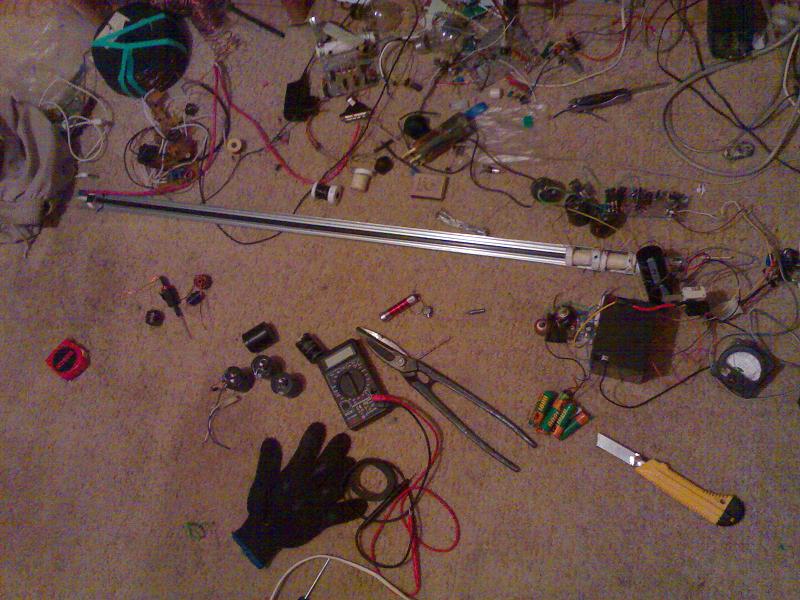
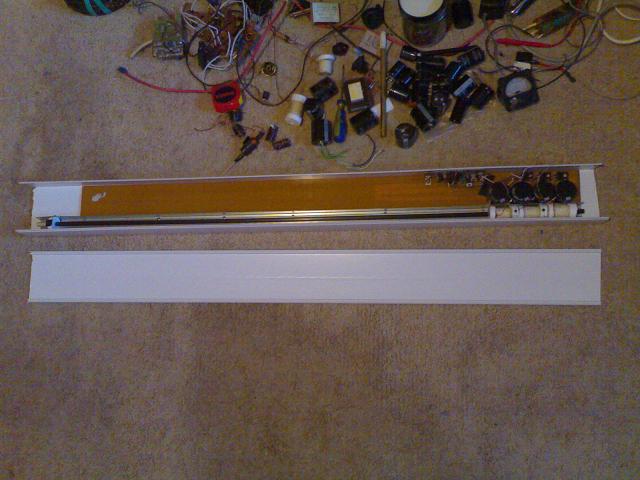
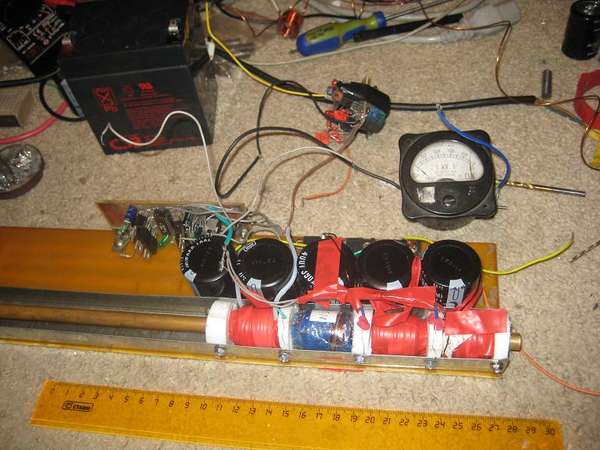
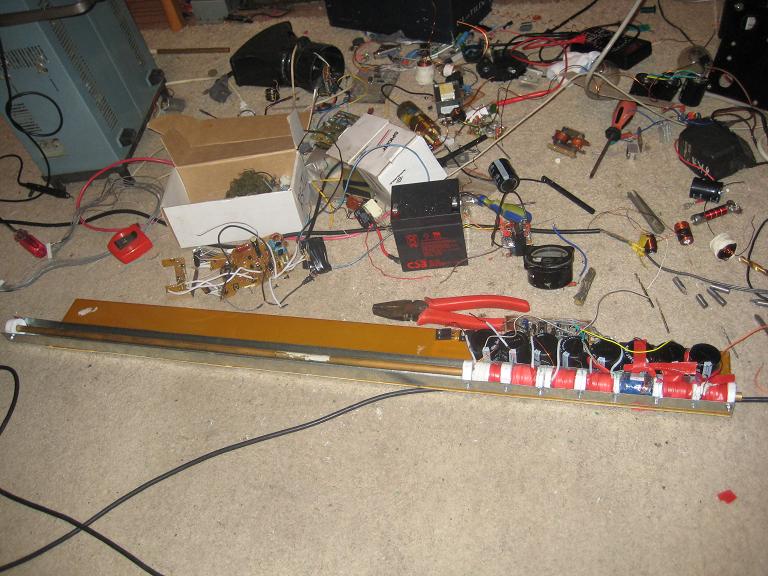

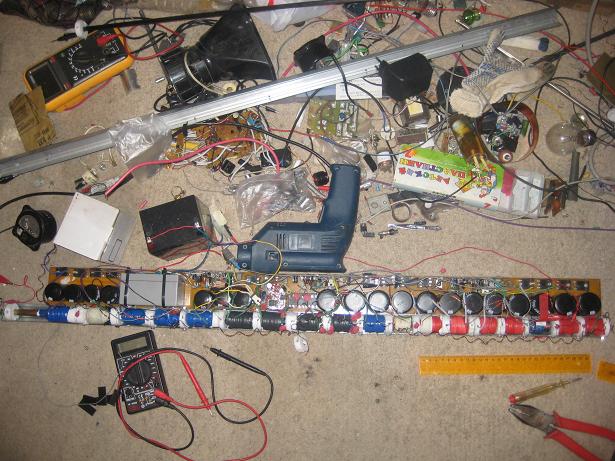
The diameter of the wire, the number of turns, the geometrical parameters of the coils, the capacitance of the opto-couplers in each stage had to be selected individually to achieve maximum efficiency, and to calculate the efficiency, it was necessary to conduct test firing with different types of bullets after each change - in short, such a “fit "Took quite a while. As bullets, I used nail trimmers:
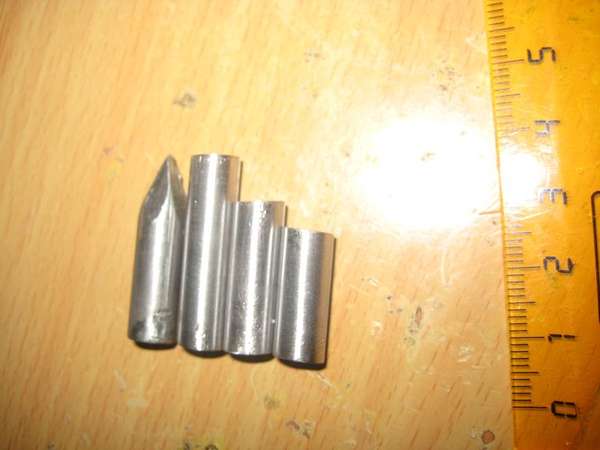
To charge capacitors from a 12v battery, I assembled a flyback converter, the power of which was enough to power a 220v bulb in full heat:
I also came up with a step controller on the Schmidt trigger:
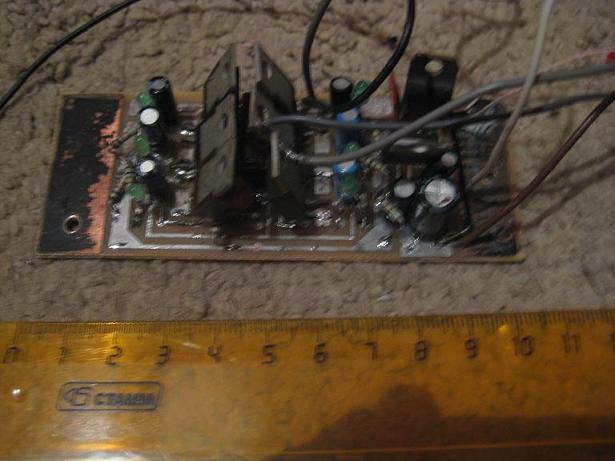
When all the steps were already in place, I suddenly remembered that the Gaussgan needed a handle, for holding it, and a trigger. The body of a broken drill was used as a handle, and the microwave button was the trigger.

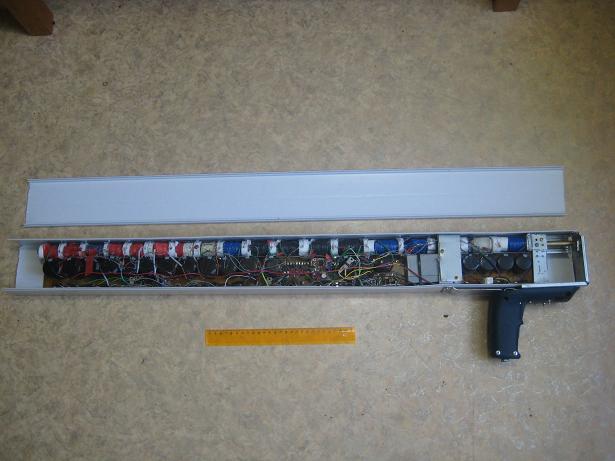
Here's what the finished gaussgan looked like:
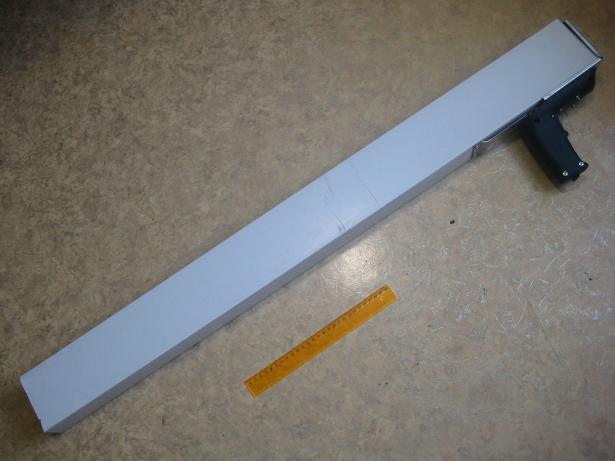
A couple of test videos (I apologize in advance for the quality):
And now a little about TTX:
Energy stored in capacitors - 550 J
Bullet energy - 28 J
Bullet speed - 70 m / s
Bullet weight - 11.4 g
Bullet diameter - 8 mm
Efficiency - 5.09%
At that time it was the most The world's most powerful home-made portable gaussgan. I wanted to make a store and sights for him, but this was not destined to come true, since my FAQ was already satisfied. I had projects of more ambitious “wunderwafels”, but I gradually abandoned them and gradually flowed into other areas of technical creativity.

About this Gaussgan I was prompted to write this article . It briefly describes the design of a single-stage gaussgan, so I won’t repeat it. The meaning of a multi-stage gaussgan is for the projectile to immediately accelerate after the first coil leaves the next coil, and thus each step would add a little bit of speed to it.
Since my knowledge and skills in the field of design at that time were small, I decided to do everything as simple as possible and without frills. The barrel was a 10mm brass tube from a construction magazine, the “receiver” was a piece of galvanized profile, the “frame” was a sheet of PCB, and the body was a square conduit. Thyristors were found in the radio parts store, I dropped out the capacitors from CRT monitors, and optocouplers from ball mice. Other details were found on the radio market and in old household appliances. Next are a few photos of the assembly process:






The diameter of the wire, the number of turns, the geometrical parameters of the coils, the capacitance of the opto-couplers in each stage had to be selected individually to achieve maximum efficiency, and to calculate the efficiency, it was necessary to conduct test firing with different types of bullets after each change - in short, such a “fit "Took quite a while. As bullets, I used nail trimmers:

To charge capacitors from a 12v battery, I assembled a flyback converter, the power of which was enough to power a 220v bulb in full heat:
I also came up with a step controller on the Schmidt trigger:

When all the steps were already in place, I suddenly remembered that the Gaussgan needed a handle, for holding it, and a trigger. The body of a broken drill was used as a handle, and the microwave button was the trigger.


Here's what the finished gaussgan looked like:

A couple of test videos (I apologize in advance for the quality):
And now a little about TTX:
Energy stored in capacitors - 550 J
Bullet energy - 28 J
Bullet speed - 70 m / s
Bullet weight - 11.4 g
Bullet diameter - 8 mm
Efficiency - 5.09%
At that time it was the most The world's most powerful home-made portable gaussgan. I wanted to make a store and sights for him, but this was not destined to come true, since my FAQ was already satisfied. I had projects of more ambitious “wunderwafels”, but I gradually abandoned them and gradually flowed into other areas of technical creativity.
